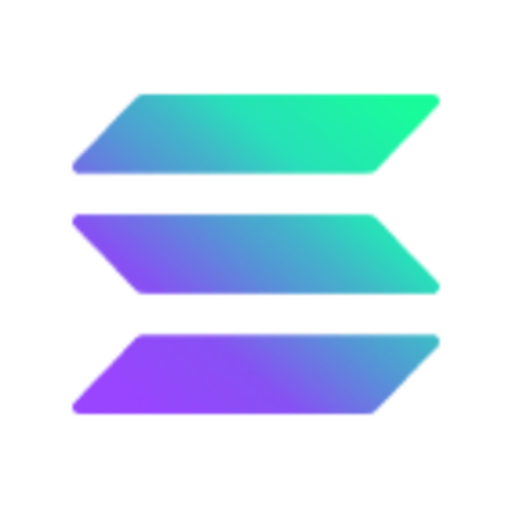Solana vs OKT Chain – Price, Market Cap & Performance Compared
Which coin performs better – Solana or OKT Chain?
We compare the current price (211.95 $ vs 10.1 $), market cap (115 139 188 576 vs 180 284 381) and all-time high (293.31 vs 250.53).
Find out which one stands out right now!
Solana is currently trading at 211.95 $, while OKT Chain stands at 10.1 $. These cryptocurrencies differ not only in price but also in market presence.
The market cap of Solana is around 115 139 188 576, and OKT Chain has about 180 284 381. Their respective all-time highs are 293.31 for Solana and 250.53 for OKT Chain.
Daily trading volume and the 24h price change (-1.06296 % vs ) also offer key insights.
Compare all metrics now and see which coin fits your investment strategy best!
Solana
Solana is an advanced blockchain platform that has quickly gained traction due to its high-speed and low-cost transactions. Its architecture is designed to handle thousands of transactions per second, which positions it as a strong competitor in the decentralized finance space. As developers continue to build on its network, Solana is poised to support a diverse range of applications, making it a significant player in the cryptocurrency ecosystem.
more informationOKT Chain
OKT Chain is emerging as a significant player in the decentralized finance ecosystem, offering a robust platform for developers to build and deploy their applications. With its focus on scalability and interoperability, it aims to address some of the key challenges faced by existing blockchain technologies. As more users recognize the potential of OKT Chain, it could play a pivotal role in shaping the future of decentralized finance and blockchain innovation.
more information

|

|
|
|
|
General Information |
|
|---|---|
|
Title
Solana
|
Title
OKT Chain
|
|
Symbol
sol
|
Symbol
okt
|
|
Whitepaper
-
|
Whitepaper
-
|
|
Website
|
Website
|
|
Community
-
|
Community
-
|
|
Last Updated
2025-09-24 23:29
|
Last Updated
2025-08-14 18:44
|
Price Data |
|
|---|---|
|
Current Price $
211.95 $
|
Current Price $
10.1 $
|
|
High 24h
216.29 $
|
High 24h
-
|
|
Low 24h
206.33 $
|
Low 24h
-
|
|
Price Change 24h
-2.27718 $
|
Price Change 24h
-
|
|
Price Change % 24h
-1.06296 %
|
Price Change % 24h
-
|
Market Data |
|
|---|---|
|
Market Cap
115 139 188 576
|
Market Cap
180 284 381
|
|
Total Volume
8 426 373 441
|
Total Volume
727.69
|
|
Market Cap Change 24h
-1 726 644 361
|
Market Cap Change 24h
-
|
|
Market Cap Change % 24h
-1.47746 %
|
Market Cap Change % 24h
-
|
|
Return on Investment (ROI)
-
|
Return on Investment (ROI)
-
|
Supply and Availability |
|
|---|---|
|
Circulating Supply
543 390 185
|
Circulating Supply
17 847 260
|
|
Total Supply
610 459 596
|
Total Supply
17 847 260
|
|
Max Supply
-
|
Max Supply
21 000 000
|
Historical Data |
|
|---|---|
|
All Time High (ATH)
293.31
|
All Time High (ATH)
250.53
|
|
ATH Change %
-27.78745 %
|
ATH Change %
-95.9680 %
|
|
ATH Date
2025-01-19 11:15
|
ATH Date
2021-05-10 03:09
|
|
All Time Low (ATL)
0.50080
|
All Time Low (ATL)
4.35
|
|
ATL Change %
42 194 %
|
ATL Change %
132.38712 %
|
|
ATL Date
2020-05-11 19:35
|
ATL Date
2025-04-07 07:02
|
Solana
The Rise of Solana: A Deep Dive into the Blockchain Superstar
Solana (SOL) has emerged as one of the most prominent blockchain platforms in recent years, showcasing impressive growth and technological advancements. Known for its high-speed transactions and low fees, Solana has become a favorite among developers and investors alike. This article aims to explore the unique features of Solana, its historical performance, as well as its future prospects.
Key Features Setting Solana Apart
Solana's key selling point is its ability to process transactions at lightning speed compared to other blockchains. It utilizes a unique consensus mechanism known as Proof of History (PoH), which enables the network to handle thousands of transactions per second (TPS), a feat unmatched by many other blockchains. This innovation allows for scalability without compromising on speed or cost, making Solana an attractive option for decentralized applications (DApps) and decentralized finance (DeFi) projects. Additionally, the low fee structure further enhances its appeal in the crypto space.
Advantages of Solana
One of the main advantages of Solana is its scalability. As the demand for blockchain technology grows, the need for scalable solutions becomes more critical. Solana's architecture allows for rapid scaling, positioning it as a robust platform for future expansion. Furthermore, Solana boasts an active developer community that continuously contributes to its ecosystem, resulting in a diverse range of applications and services being built on the network. The high throughput and low transaction costs make it an ideal environment for developers, encouraging innovation across various sectors.
Challenges and Criticisms
No technology comes without its set of challenges, and Solana is no exception. One of the criticism often aimed at Solana is its level of decentralization. Critics argue that the network's reliance on a limited set of validators potentially undermines its decentralized ethos. Additionally, like other emerging technologies, Solana faced network outages in the past, raising concerns about its reliability and stability during high-stress periods of network activity.
A Look Back: Solana's Historical Performance
Solana's journey began in 2020 when it was introduced to the crypto world. Its price hit an all-time low (ATL) of $0.500801 in May 2020. The blockchain quickly garnered attention, and by November 2021, it reached an all-time high (ATH) of $259.96. Solana's price movements during these years reflect the broader market sentiment and growing interest in scalable blockchain solutions. Despite experiencing significant market volatility, including a notable price correction from its ATH, Solana has maintained a strong market presence.
Future Prospects of Solana
As we look to the future, Solana's prospects seem promising. Its growing ecosystem, coupled with continuous technological improvements, positions it well to capture a significant share of the blockchain market. The platform's focus on scalability and efficiency will likely drive more developers and projects to choose Solana as their preferred blockchain network. Furthermore, ongoing partnerships and integrations suggest a positive trajectory for Solana, allowing it to compete with other major blockchains in the years to come.
In conclusion, Solana represents a significant development in the crypto landscape, distinguished by its speed, scalability, and low-cost transactions. While the network faces inherent challenges that accompany any young and rapidly growing technology, the potential for innovation and adoption remains substantial. As Solana continues to evolve, it will undoubtedly be a crypto story worth following closely.
OKT Chain
Understanding OKT Chain: A Comprehensive Overview
In the rapidly evolving world of cryptocurrencies, OKT Chain, represented by the symbol 'okt', has emerged as a noteworthy player. Launched as the native token of the OKC ecosystem, OKT Chain aims to provide a highly efficient platform for decentralized applications (dApps) while leveraging the growing user base of the OKX exchange. Its current price stands at $7.18, a significant step down from its all-time high of $250.53 reached in May 2021, but it does present both opportunities and challenges for investors and developers alike.
Historical Performance and Market Dynamics
OKT Chain has seen substantial price volatility since its inception. After reaching an all-time high of $250.53, the token faced significant corrections, reflecting the broader trends in the cryptocurrency market. As of now, the market capitalization of OKT Chain is approximately $127.9 million. The circulating supply is capped at about 17.84 million tokens, contributing to the asset's market dynamics. Furthermore, the token reached its all-time low of $5.52 in August 2024, highlighting its price fluctuations and the investor sentiment associated with it.
Advantages of OKT Chain
One of the most compelling advantages of OKT Chain is its robust infrastructure that supports high transaction speeds and low fees, a critical factor for dApps and blockchain developers. Additionally, being closely associated with the OKX ecosystem, OKT benefits from a large user base and enhanced liquidity. The platform also emphasizes interoperability, allowing interactions with various blockchain networks, which can be appealing to developers seeking to build versatile applications.
Challenges and Considerations
Despite its advantages, OKT Chain does face challenges. The dramatic decline from its ATH raises questions about its long-term value perception among investors. Regulatory scrutiny remains a significant concern within the cryptocurrency space, which could impact the growth and adoption of OKT Chain. Furthermore, competition with other established smart contract platforms like Ethereum and Binance Smart Chain can pressure OKT to continuously innovate and offer compelling use-cases.
Future Outlook for OKT Chain
Looking ahead, the future of OKT Chain appears to be a balancing act. If it can leverage its existing ecosystem effectively and continue to attract developers to its platform, the potential for growth is significant. Additionally, as the cryptocurrency market matures, the macroeconomic environment and regulatory frameworks will play crucial roles in shaping its trajectory. Innovations, partnerships, and an evolving market strategy will be key areas to watch as we head into 2025 and beyond.
Conclusion: Is OKT Chain Worth Considering?
In summary, while OKT Chain presents an exciting opportunity within the crypto space, it is essential for potential investors and developers to approach with a balanced perspective, considering both the advantages and challenges. As the ecosystem develops and the market landscape changes, keeping an eye on OKT Chain could yield valuable insights into the future of decentralized finance and blockchain technology.

